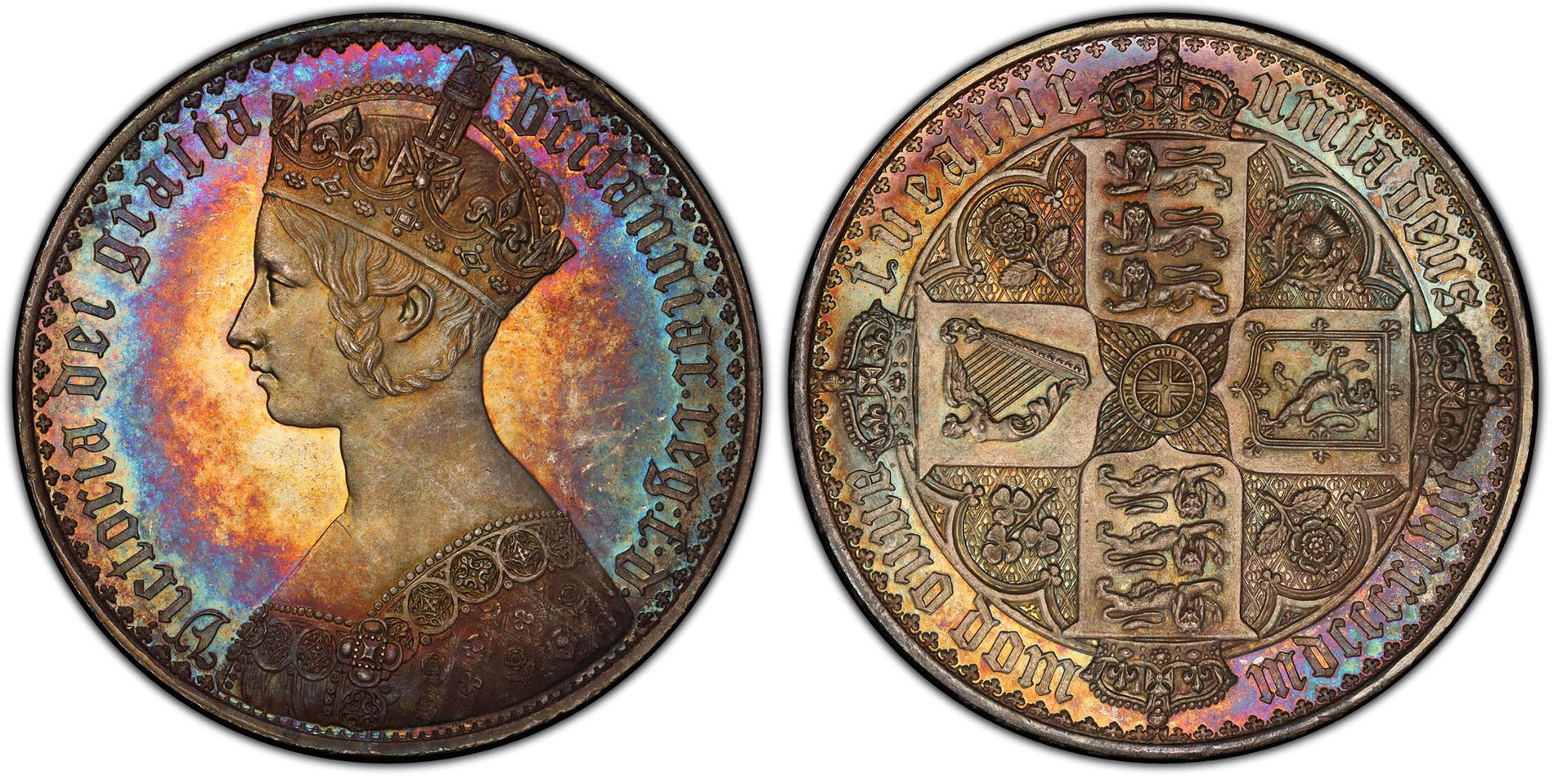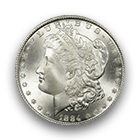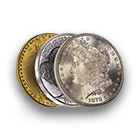The 1970-D Kennedy Half Dollar is one of the most underrated of all modern United States coins. Marking the end of an era, it was the last of all circulating-issue United States coinage made with a silver composition. And even though the 1970-D Kennedy half dollar was issued only in uncirculated sets, it nevertheless represents the exclamation point on a run of silver-based business-strike Kennedy half dollars struck for regular use in commerce. The last silver half dollars of 1970 symbolize an end for the long-running tradition of striking higher-denomination coinage in silver compositions. Since the United States Mint began striking the denomination in 1794, half dollars had always been made from silver.
For most of its life, the United States half dollar was struck from a composition of 90% silver, 10% copper. However, a spike in silver prices during the early 1960s led to the widespread hoarding of circulating silver coins – suddenly worth more for their silver content than their face value. So, in 1965, the United States government acted quickly to convert the 90% silver dime and quarter to a base-metal copper-nickel clad format and reduce the silver purity of the half dollar from 90% to 40%.
In May 1969, United States Treasury officials began drafting measures to eliminate silver from the half dollar, opting to produce it with the same cupro-nickel composition used in making dimes and quarters. At the same time, the Treasury also had plans for a new cupro-nickel one-dollar coin. One of the design candidates mentioned for the proposed dollar was Dwight D. Eisenhower, who had served as the nation’s 34th president from 1953 through 1961 and had recently passed away earlier in 1969.
While President Richard M. Nixon was supportive of the idea, other Republicans did not want Eisenhower’s likeness on base-metal coinage. Therefore, the proposals for both the new clad half dollars and the Eisenhower dollar coin were disputed for more than a year until a bill approving copper-nickel clad half dollars and dollar coins was signed by President Nixon on December 31, 1970.
Of course, by that time, the United States Mint had no option but to strike 1970 Kennedy half dollars from the existing 40% silver composition. Business-strike examples of the 1970 halves were struck only at the Denver Mint, as had previously been the case in both 1968 and 1969. Meanwhile, 1970 proof Kennedy halves were struck at the San Francisco Mint.
In a move to prevent hoarding of 1970 uncirculated sets, the United States Mint did not disclose that the 1970-D Kennedy Half Dollar was struck for inclusion in the mint set until after the last orders for the sets were completed. It could therefore be said that, in the context of preventing a run on the sets, that particular U.S. Mint marketing strategy proved successful. Final distribution numbers for the 1970 set are generally consistent with production figures for other United States uncirculated sets of the era. A total of 2,038,134 uncirculated sets were made in 1970, versus 2,105,128 in 1968, 1,817,392 in 1969, and 2,193,396 in 1971.
While the 1970 mint sets, originally issued for $2.50 apiece, are about as common as others from the late 1960s and early 1970s, the 1970-D Kennedy Half Dollar is a relatively scarce issue with its mintage of 2,150,000 pieces. It’s also recognized as a key-date issue for the Kennedy half dollar series and is the lowest-mintage regular-issue, business-strike Kennedy half dollar among the group from struck from 1964 through 2005. It should be noted here that the Kennedy half dollar has been hoarded by the public since its release in 1964.
Today, many non-collectors mistakenly believe that even circulated cupro-nickel Kennedy half dollars are worth more than face value. This misconception probably stems from the idea that, because they’re so difficult to find in circulation, all Kennedy half dollars must be “special” or “rare.” Being a memento of the beloved, fallen President John F. Kennedy, who was assassinated on November 22, 1963 during a motorcade procession in Dallas, Texas, also helps this coin’s popularity among many outside numismatics.
Though some lucky roll searchers have found 1970-D Kennedy halves at face value, these scarce coins can be easily obtained in the marketplace for relatively little cost. PCGS CoinFacts® lists 1970-D Kennedy half dollars in MS65 for $45. However, higher-end specimens are quite rare and nothing to sneeze at. One example, graded MS67 by PCGS, realized $5,195 in 2013. PCGS population reports reflect just 15 in that grade with none higher. And with so few top-end examples available for collectors of this popular series today, it’s no wonder that the 1970-D Kennedy half dollar still proves a most challenging piece for many series enthusiasts 50 years later.







 Copper & Nickel
Copper & Nickel
 Silver Coins
Silver Coins
 Gold Coins
Gold Coins
 Commemoratives
Commemoratives
 Others
Others
 Bullion
Bullion
 World
World
 Coin Market
Coin Market
 Auctions
Auctions
 Coin Collecting
Coin Collecting
 PCGS News
PCGS News